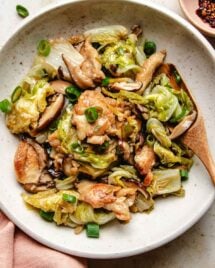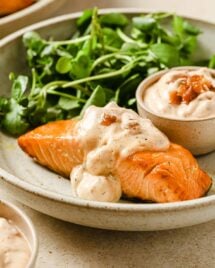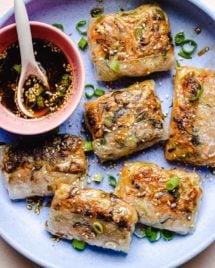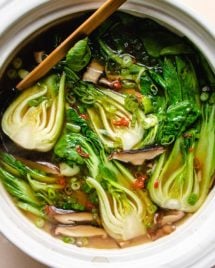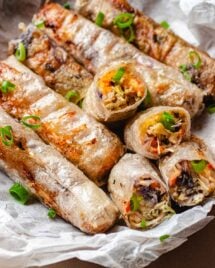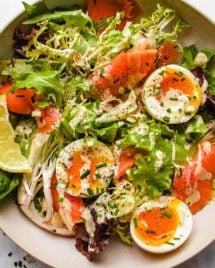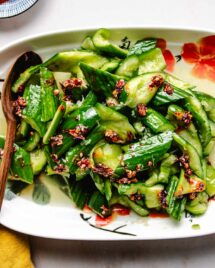Types of Chinese noodles and wrappers
An ultimate guide to different types of Chinese noodles and dumpling wrappers. Chinese noodles especially come in so many shapes and sizes. This guide will teach you about popular kinds of Asian and Chinese noodles and wrappers. It covers what they’re made of, how they taste and feel when you eat them, and how to cook with them.
You’ll learn the different types of Asian noodles from fresh chow mein noodles to glassy bean thread noodles. Whether you’re new to Asian cooking or a noodle maniac, this guide will help you learn Asian noodle varieties and wrappers for dumplings and wontons!
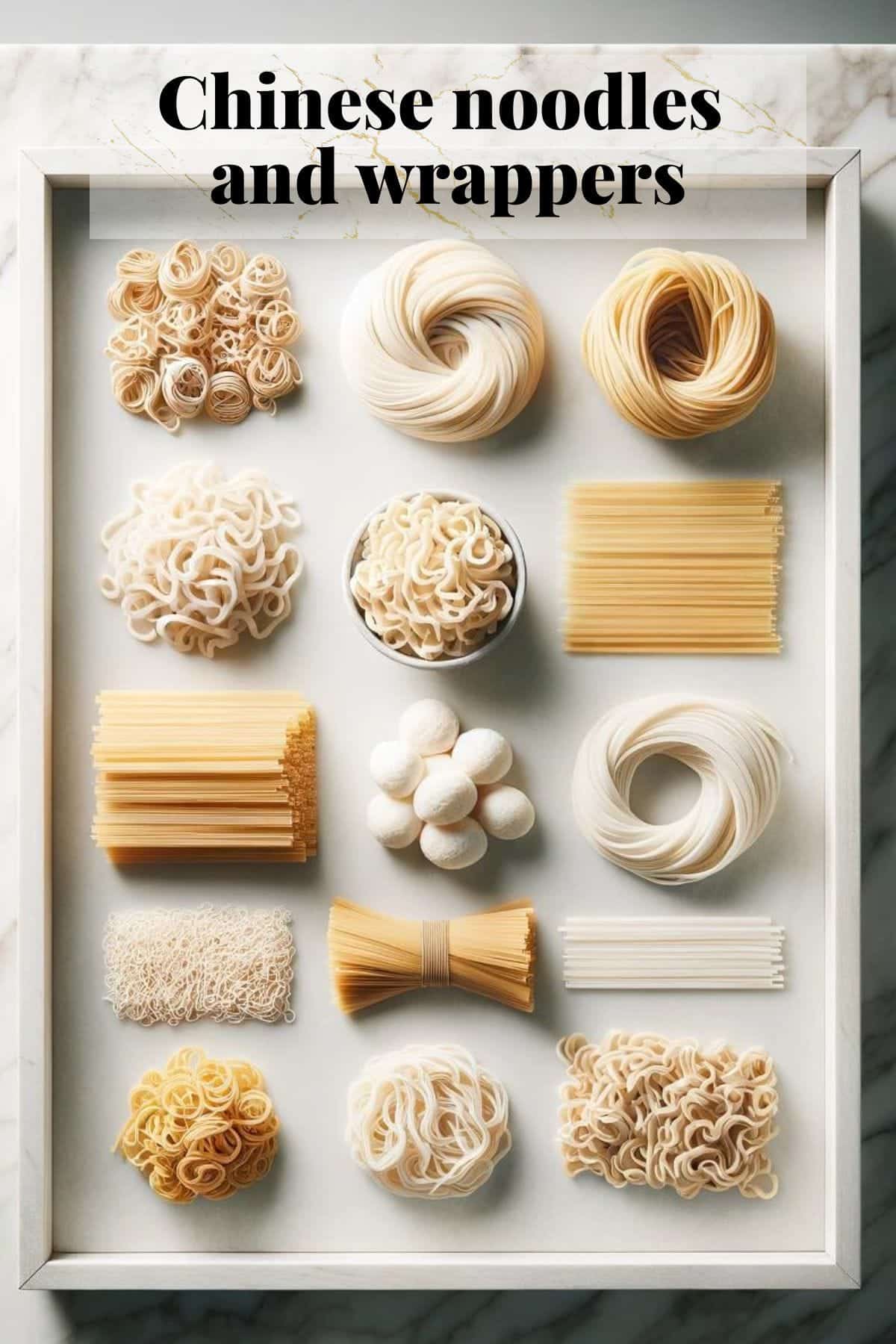
Rice noodles
Rice noodles are the most popular noodle variety across China and Southeast Asia. Made from rice flour and water, they come in many shapes like thin vermicelli, wide flat noodles, rice sticks, and various widths in between. Rice noodles are often used in signature dishes like pad thai, Singapore noodles, and pho.
Rice vermicelli
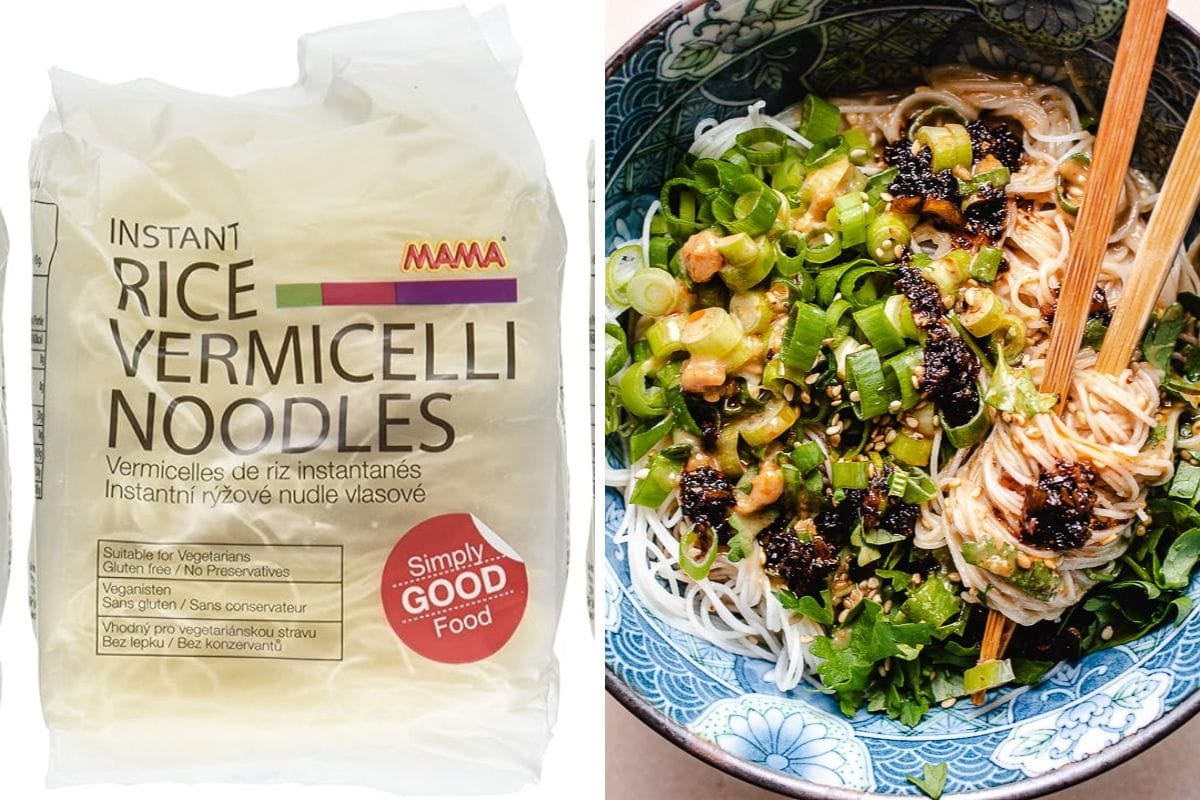
Rice vermicelli “米粉” (mi fen) or mei fun (in Cantonese) are thin rice flour strands that come dried in bunches.
Rice sticks
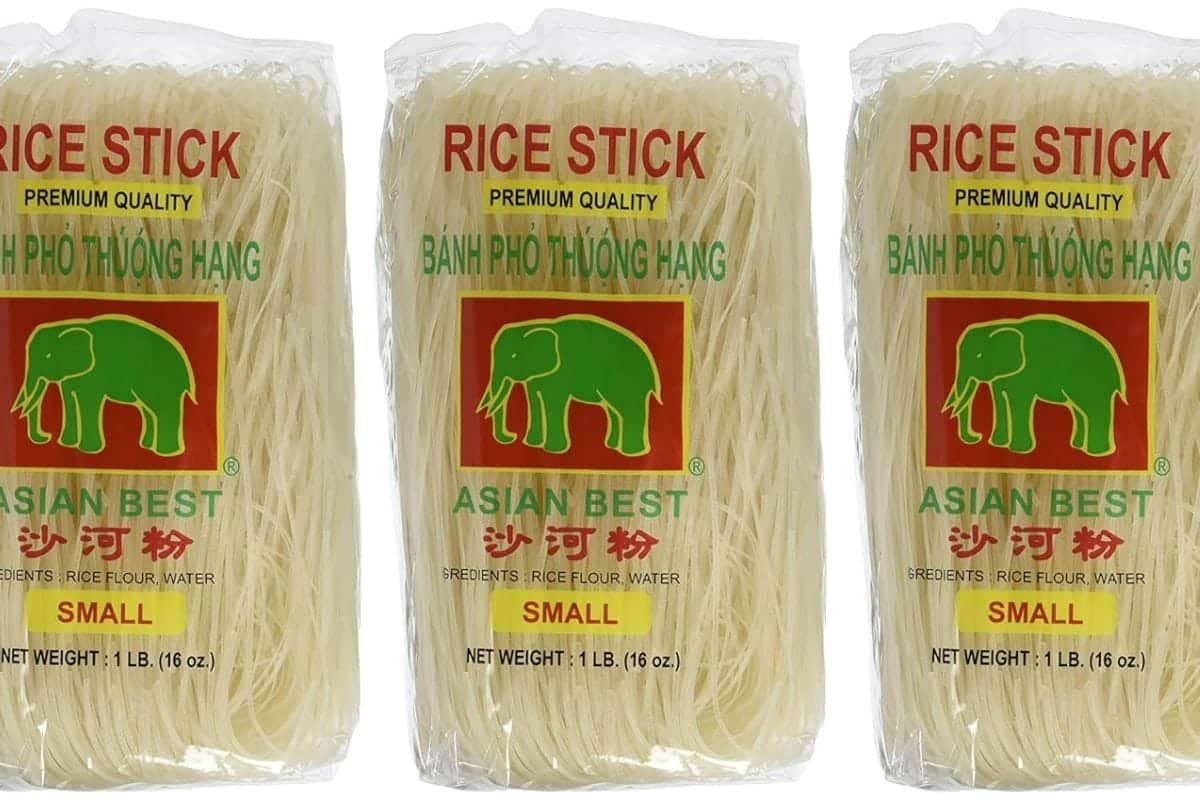
Rice sticks “米线” (mi xian) are slightly thicker fresh or dried noodles originally from Yunnan province. They are made from a mixture of non-glutinous rice flour and water, giving them a springy, chewy texture. They are common in dishes like Yunnan rice noodle soup.
Flat rice noodles
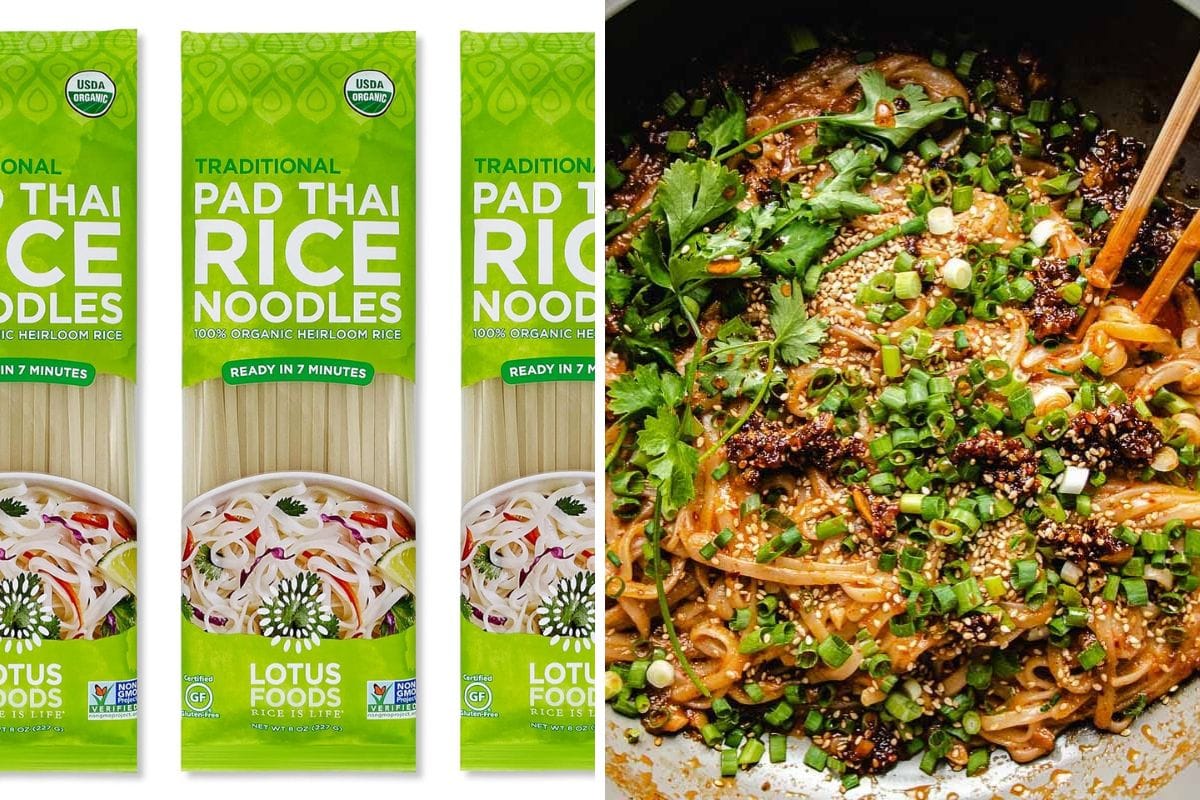
Chinese flat noodles, including wide rice noodles and narrower rice noodles, come in various widths and can be in fresh or dry forms.
The most popular wide Chinese noodles are called Ho Fun (in Cantonese) or “河粉” (Hé fěn) in Mandarin. They are used in stir-fries (chow ho fun or chow fun) and in soups.
The thinner version of flat Asian noodles is mainly used in noodle soups and pho. Because of their delicate texture, thin rice noodles are not recommended to use in stir fries because they will break apart and turn mushy. This is also the most common type of rice noodles people can buy in the U.S.
In Chinese home cooking, dried rice vermicelli and sticks are most often prepared by soaking in hot water to rehydrate before adding to soups, stir-fries, and noodle dishes.
Fresh flat rice noodles need only a quick dip in hot water. If they are sold in dry form, it takes only a few minutes to boil the noodles in hot water.
Rice noodles are versatile as they readily absorb flavors from sauces, broths, and other ingredients. Their gluten-free nature also makes them a good substitute in many recipes. Check out our many rice noodle recipes such as Garlic chili noodles and Spicy peanut noodles.
Chinese rice cake (Nian gao)

Chinese rice cakes, known as nian gao or Shanghai rice cakes, are made from wet-milled Thai rice flour, tapioca starch, salt, and water. This combination gives them a smooth, chewy, and silky texture.
Unlike Korean rice cakes, which are cylindrical, Chinese rice cakes are sliced into thin ovals, perfect for savory dishes. They can be boiled, steamed, fried, stir-fried, or added to soups and Vegan hot pot.
Selection and Preparation: Available in Chinese and Korean grocery stores, Shanghai-style rice cakes are best for stir-frying. Preparation methods vary by packaging:
- Boil Directly: Suitable for fresh, refrigerated (vacuum-sealed), and frozen rice cakes, boiling takes about 3-4 minutes without needing to pre-soak or thaw.
- Pre-Soaking Required: Dry, shelf-stable rice cakes need at least 30 minutes in warm water before cooking.
Cooking Tip: Follow package instructions for best results and separate rice cake slices before cooking to ensure even preparation. Fresh or refrigerated (vacuum-sealed) rice cakes are recommended for their ideal chewy and silky texture. Check out our Shanghai rice cake with Napa cabbage and bok choy recipe.
Egg noodles
Chinese egg noodles are made with wheat flour, eggs, and water. The addition of eggs gives them a distinct yellow color and a springy, chewy texture compared to regular wheat noodles.
Common types of Asian egg noodles include chow mein, lo mein, wonton noodles, and yaka mein. Hong Kong-style egg noodles can come fresh, frozen, or dried in various shapes from thin strands to wide ribbons. Because egg noodles are made from wheat, these noodles are much sturdier than rice noodles, and that makes them much more suitable for stir-fries.
Chow mein noodles
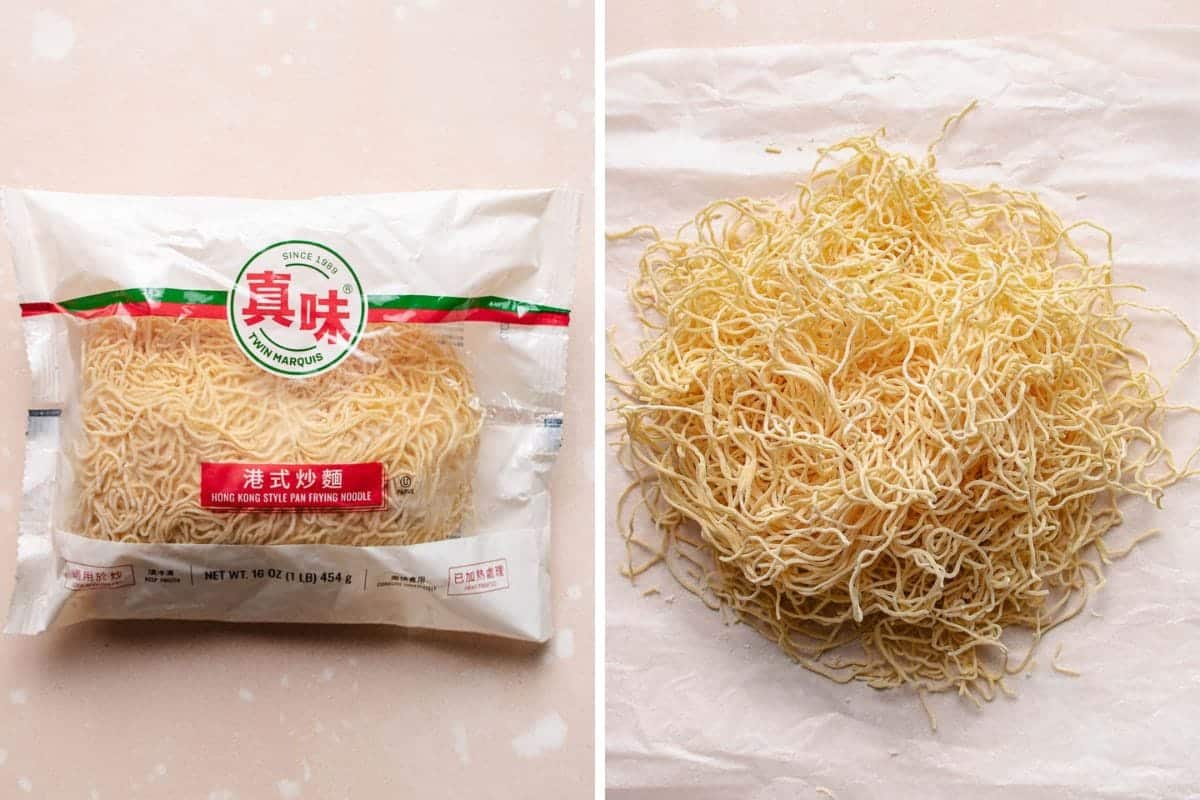
Chow mein noodles “炒麵” (Chǎomiàn) are made from wheat flour, eggs, and water. They are thin, crinkly, and wavy yellow noodles that are dried after production. These thin egg noodles have an elastic texture and are often parboiled and then stir-fried for dishes like house special chow mein and Cantonese chow mein.
Lo mein noodles
Lo mein noodles “撈麵“ (Lāo miàn) also contain wheat flour, eggs, and water. They are cut slightly thicker and rounder in shape than chow mein. They are packaged fresh, refrigerated, or frozen. Lo mein has a soft, spongy texture and is commonly boiled briefly before tossing with ingredients like beef and veggies. Our Hibachi noodles use round lo mein noodles.
Wonton noodles
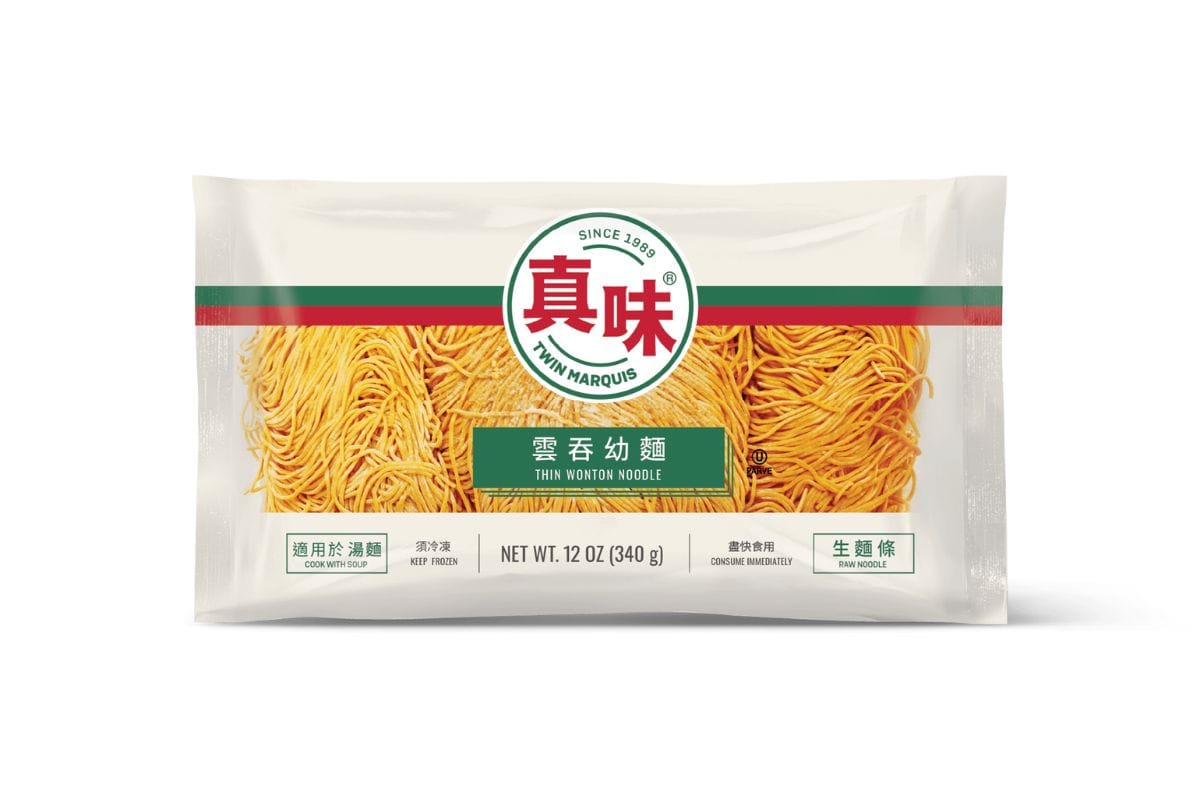
Wonton noodles are made with wheat flour, eggs, and alkaline water for texture. They are thin, straight yellow noodles sold fresh or dried. Most often people refer to them as “egg noodles”. Their springy consistency makes them ideal for soups like wonton noodle soup and shoyu ramen.
Yaka mein
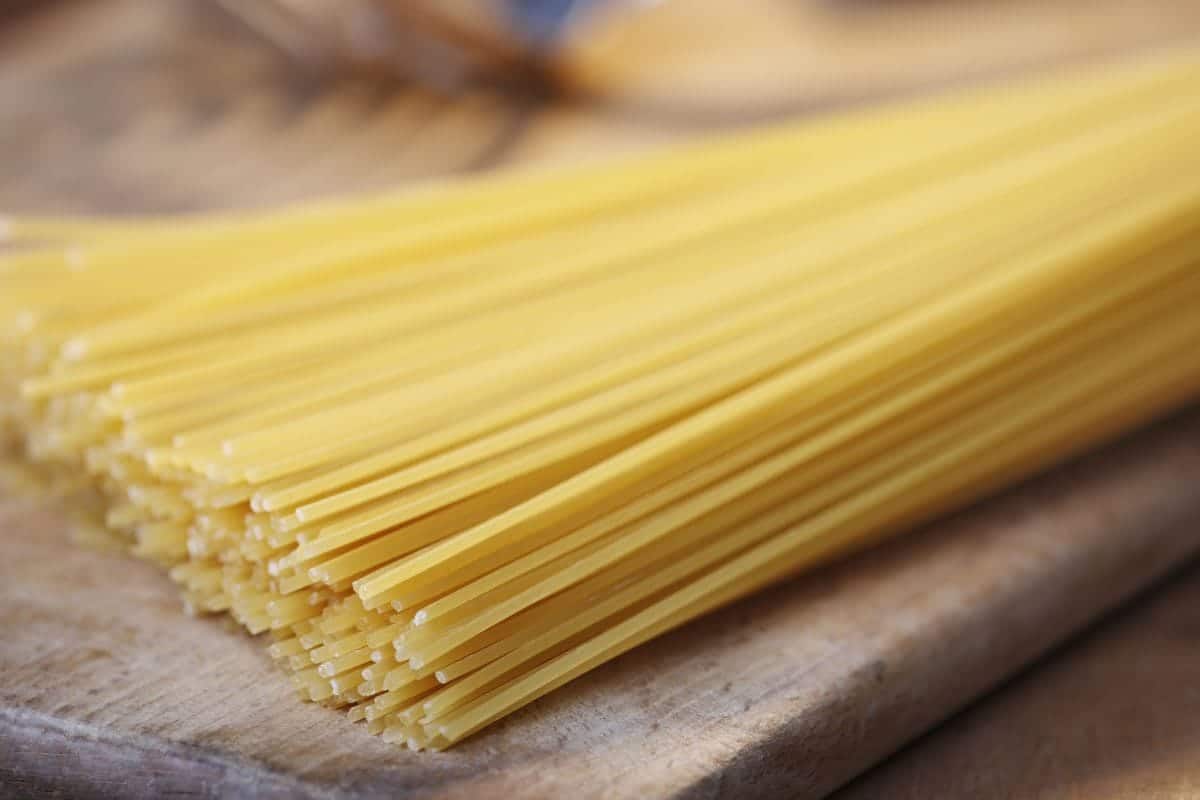
Yaka mein noodles are a Westernized version of Chinese wheat noodles. They are elastic, chewy egg noodles thicker than lo mein. Shaped like spaghetti, they can be found dried or fresh.
Yaka mein works well in baked dishes and noodle soups, absorbing flavors while maintaining its dense, bouncy texture. You can also use thin Italian pasta such as spaghetti as a substitute.
War mein
War mein, also spelled warmein or wor mein, translates from Cantonese as “deep pot noodles.” It refers to a type of noodle soup made in a deep pot, rather than a specific noodle variety. This dish is typically made using egg noodles, either thin or thick Chinese noodles.
Warmein is an old-school name for soup noodles that you don’t see often anymore in Hong Kong. However, in some parts of the US, you may still find this name used on Chinese takeout menus to denote noodle soup dishes. The soup usually contains various toppings like meat and vegetables along with the noodles.
In Chinese cooking, fresh egg noodles only need a quick boil or soak in hot boiling water while dried varieties require a slightly longer boiling times before use.
Their rich egg flavor and tender but toothsome consistency make egg noodles well-suited for noodle soups, stir-fries, and pan-tossed noodle dishes.
Wheat noodles
Wheat noodles are a common noodle variety in Chinese and Japanese cuisines. Common types of Asian wheat noodles include udon, ramen, and hand-pulled noodles. Egg noodles (mentioned above) are also wheat-based.
Udon noodles
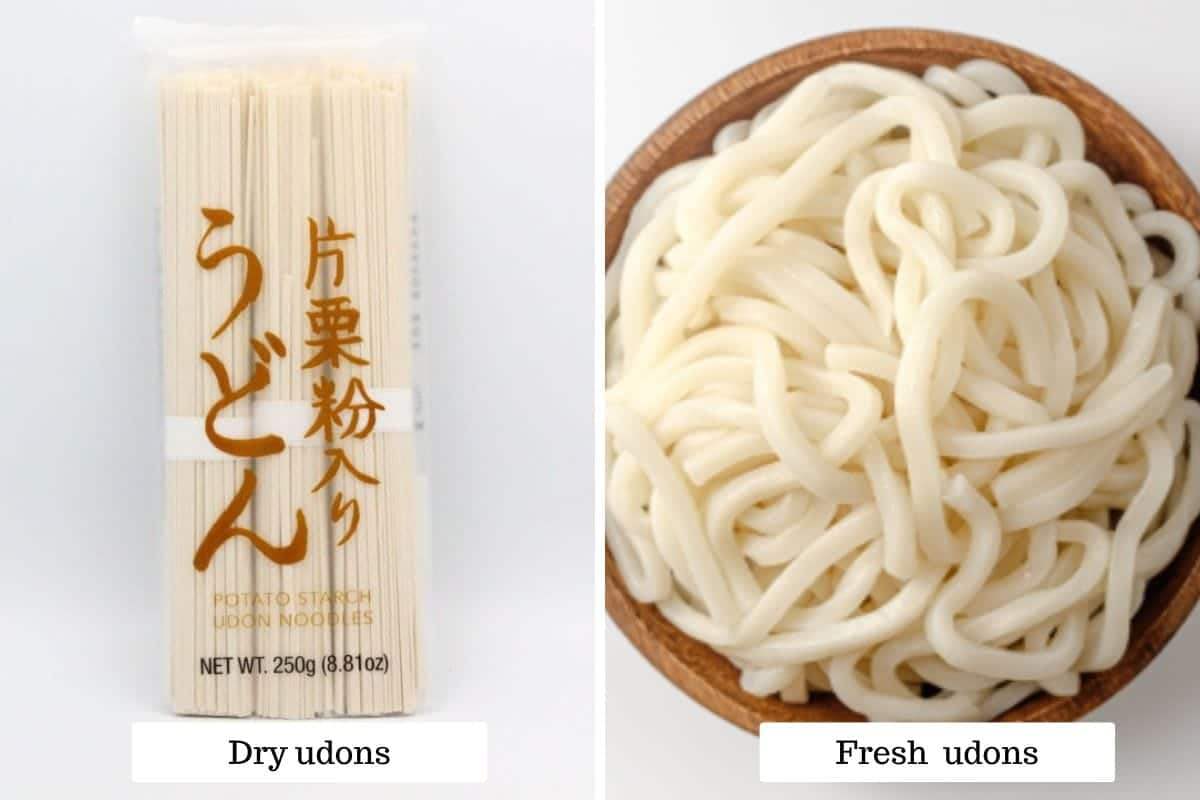
Udon noodles are made from wheat flour, water, and sometimes salt. Fresh udon is thick and round like pipe rigatoni, while dried udon is flat like fettuccine. The white noodles have a smooth, chewy texture. Udon is typically boiled and then used in hot noodle soups or stir-fries.
Ramen noodles
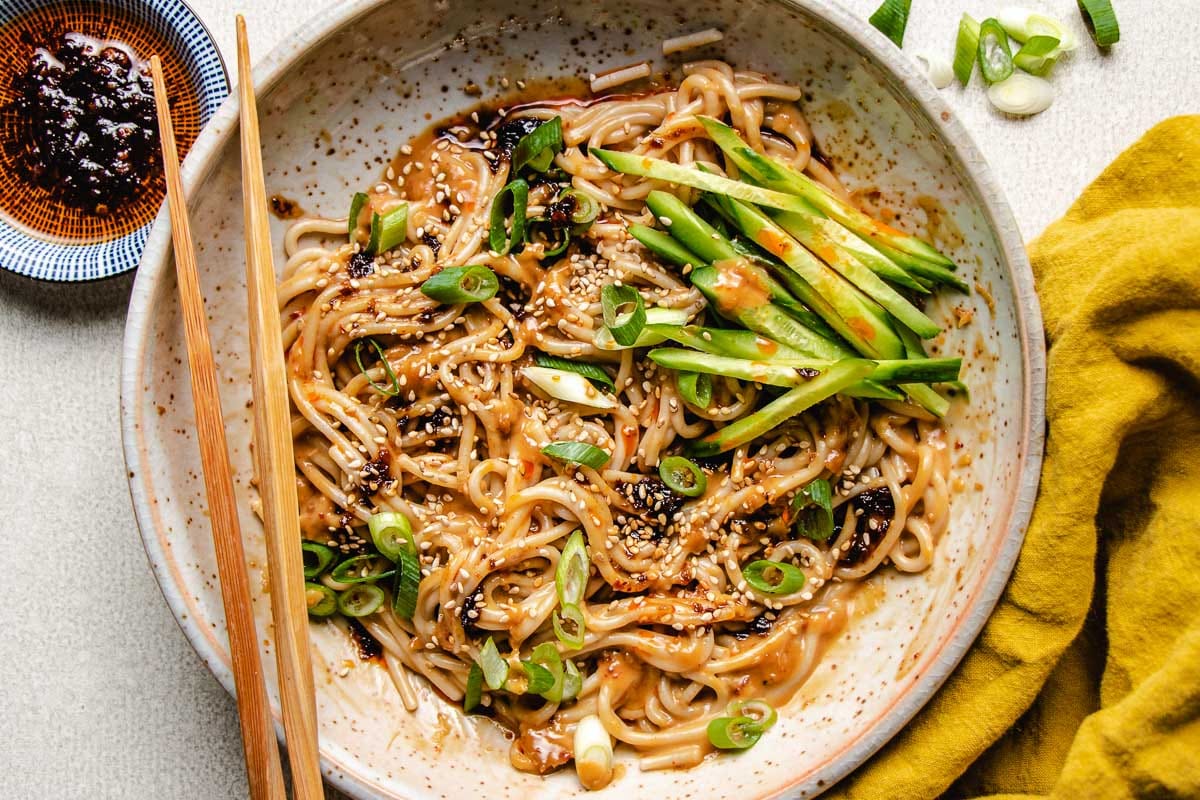
Ramen noodles contain wheat flour, water, salt, and alkaline mineral water called kansui. This gives ramen its signature wavy, yellow appearance. Ramen has a firm, elastic texture. It is boiled briefly before serving in ramen soup bowls with broth and toppings. See our popular Chili oil ramen recipe.
Hand-pulled noodles (La mian)

Hand-pulled noodles (拉麵) like la mian are made by stretching wheat dough into long chewy strands. The noodles vary in thickness depending on the pulling technique. Hand-pulled noodles have a smooth, bouncy texture and chew. It’s popular in Lanzhou beef noodles.
Dao xiao mian
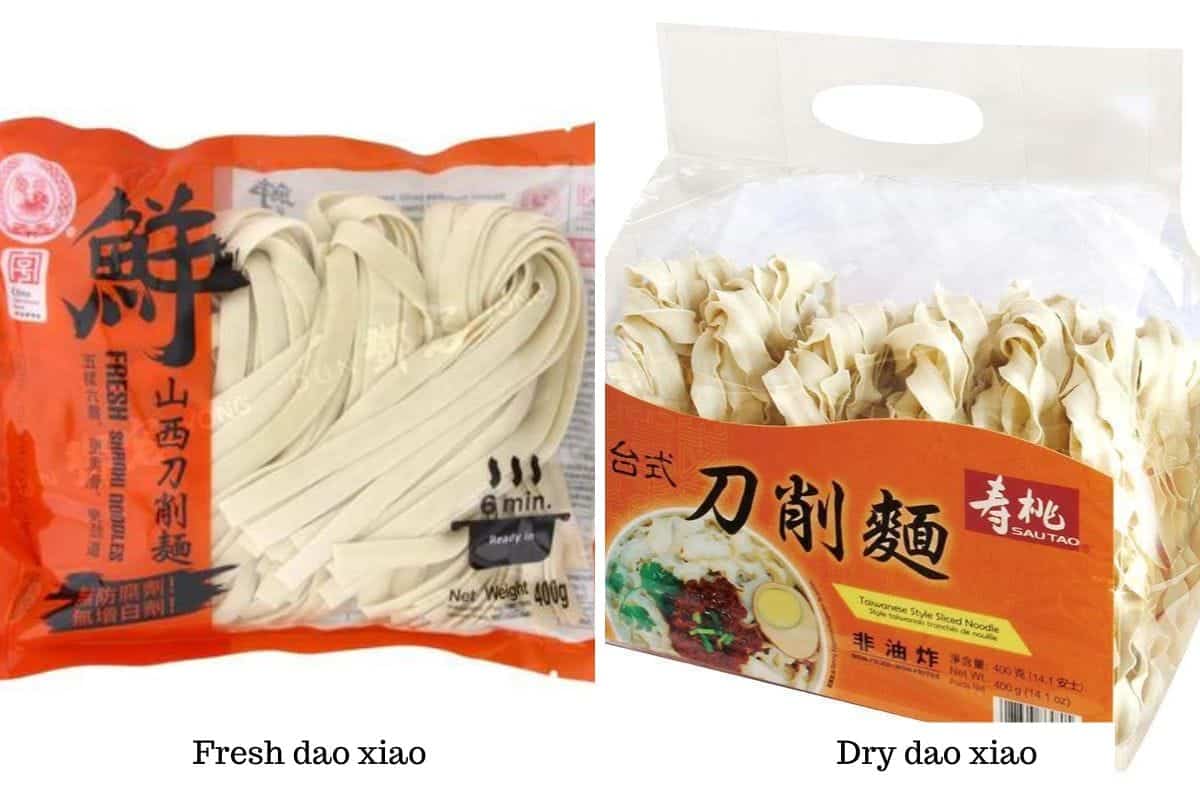
Dao xiao mian (刀小面) are knife-cut noodles made by slicing flattened wheat dough into strands with a knife. It is a type of Northern Chinese noodle. The ragged-edged noodles differ in size and thickness. In Taiwan, they are often made fresh and right before serving in restaurants.
In dry form, Dao Xiao Mian has a thinner texture with wavy and squiggly edges. Dao xiao mian is originally from Nothern China and has a very chewy texture and is typically served in noodle soups. It is one of the most popular types of Asian noodles in China and Taiwan.
Somen noodles
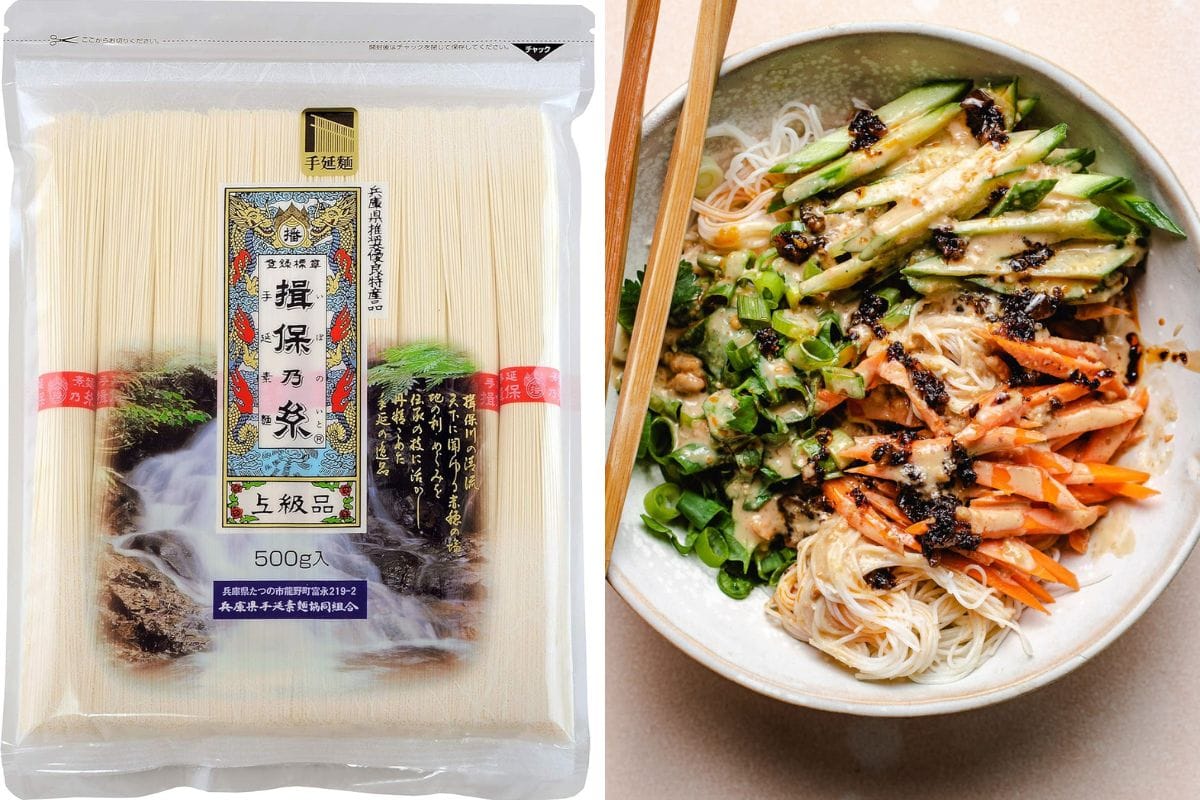
Somen noodles are very thin, white Japanese wheat noodles made with flour, salt, and water. The pale, delicate noodles are stretched and air-dried into wispy strands less than 1mm wide. Somen has a smooth, soft texture and mild flavor. It is most often served chilled with dipping sauce in the summer or clear broths. See my Taiwanese cold peanut noodles.
In home cooking, dried wheat noodles like udon and ramen are boiled before adding to soups and stir-fries. Fresh hand-pulled noodles require no pre-boiling. The neutral flavor and hearty consistency of wheat noodles allow them to pair well with savory broths, meats, and sauce-laden stir-fries. Their texture also makes them ideal for slurping noodle soups.
Glass noodles
Glass noodles, also known as bean thread or cellophane noodles, are made from mung bean, tapioca, sweet potato, or other vegetable starches mixed with water. They derive their name from their translucent, glass-like appearance when cooked. Common varieties include mung bean starch noodles and sweet potato starch noodles which are often used in Vietnamese, Korean, and Chinese cuisine.
Mung bean starch noodles
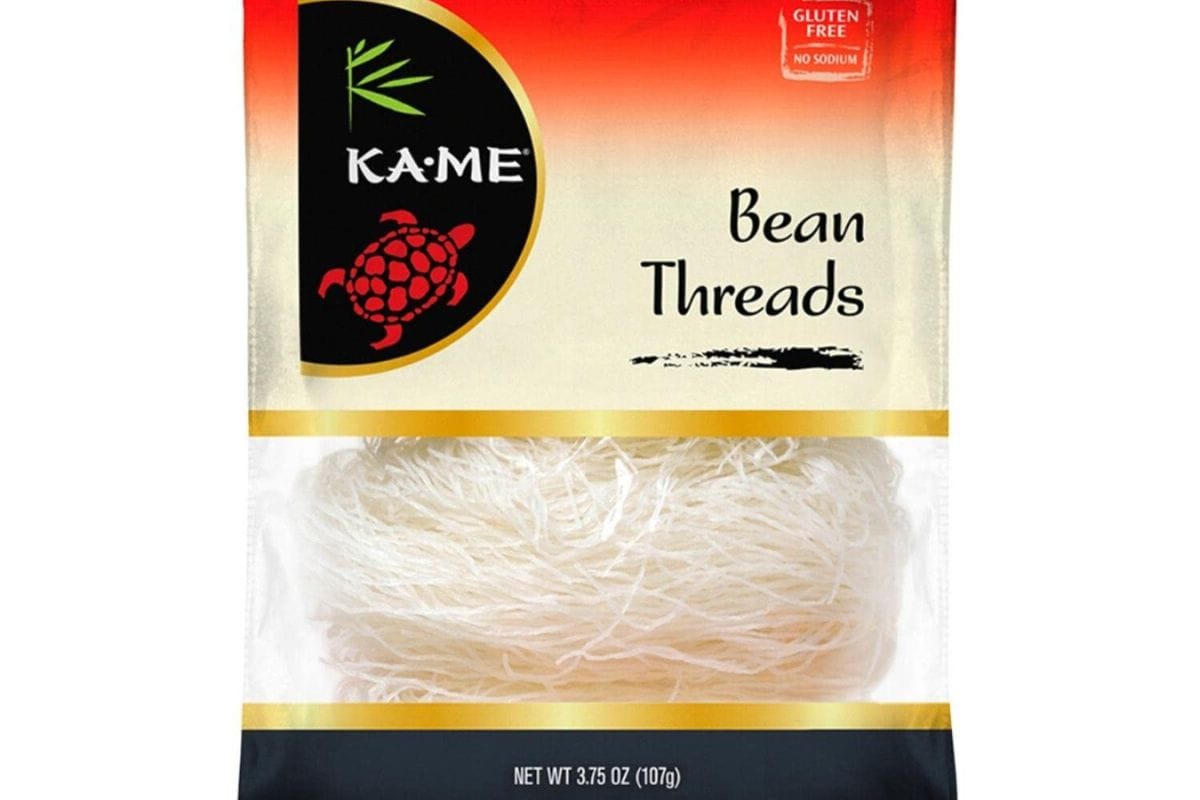
Mung bean starch noodles, often called bean thread noodles, are made from mung bean starch mixed with water. When dried, they are thin, brittle, and translucent.
Rehydrated mung bean noodles become soft and glassy. They have little flavor and readily absorb sauces and broths. Common uses include pad thai, spring rolls, and hot and sour soup.
Sweet potato starch noodles

Sweet potato starch noodles are produced from sweet potato starch and water. They are also called Korean glass noodles or dangmyeon. When dried, sweet potato glass noodles are thin and clear.
Once prepared, they become chewy, clear, and rubbery. Sweet potato noodles are frequently stir-fried, added to cold noodle salads, or served in hot pot dishes.
Glass noodles are sold dried in thin, brittle strands that require soaking in hot water to soften and cook. Their smooth, gelatinous texture allows them to absorb flavors of sauces, meats, and broths easily.
In home cooking, glass noodles are frequently added to soups, stir-fries, cold noodle dishes, and even deep-fried for garnishes and snacks. Their neutral taste and slippery consistency make them a versatile ingredient. See our Korean sweet potato noodles with chicken recipe.
Buckwheat noodles
Although Soba noodles and Naengmyeon are not traditional Chinese noodles, they are very popular in Asia. They provide a naturally gluten-free alternative to wheat noodles. However, some soba noodles do contain wheat, so check the labels.
Soba noodles
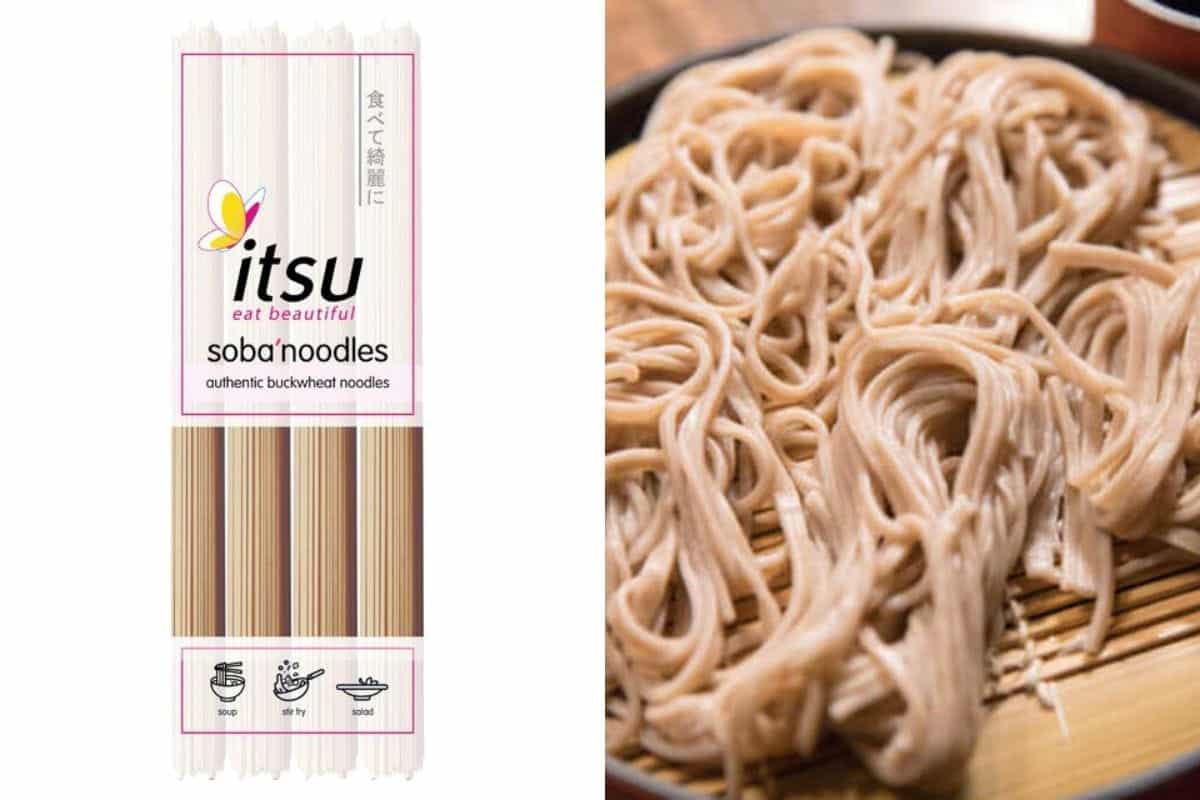
Soba noodles are Japanese noodles containing buckwheat flour and wheat flour. This gives them an earthy, nutty flavor and brownish-gray color. Soba noodles have a dense, chewy texture and can be round or square-shaped.
They are typically boiled briefly before serving either hot with broth and meat or chilled with dipping sauce. Edens Foods soba noodles do not contain wheat.
Naengmyeon

Naengmyeon are Korean chewy buckwheat noodles made with additional starch ingredients like potato or arrowroot. The very long, elastic noodles are served cold in beef broth or spicy sauce. Naengmyeon noodles are made to maximize chewiness so they can stand up to the chilled broths and sauces. Their firm texture also allows diners to cut them with scissors at the table.
Both soba and naengmyeon feature the nutty essence of buckwheat combined with a pleasant chewiness. Their hearty consistency makes them suitable for brothy noodle soups and tangy cold noodle dishes. The noodles nicely absorb and complement the flavored sauces and stocks.
Low carb noodles
While not originally from China, shirataki noodles and kelp noodles have gained popularity as low-carb, low-calorie substitutes for traditional wheat and rice noodles in Asian cooking. Both types provide a noodle-like texture and can be used similarly to traditional Chinese noodles, making them great substitutions for low-carb and keto users.
Shirataki noodles
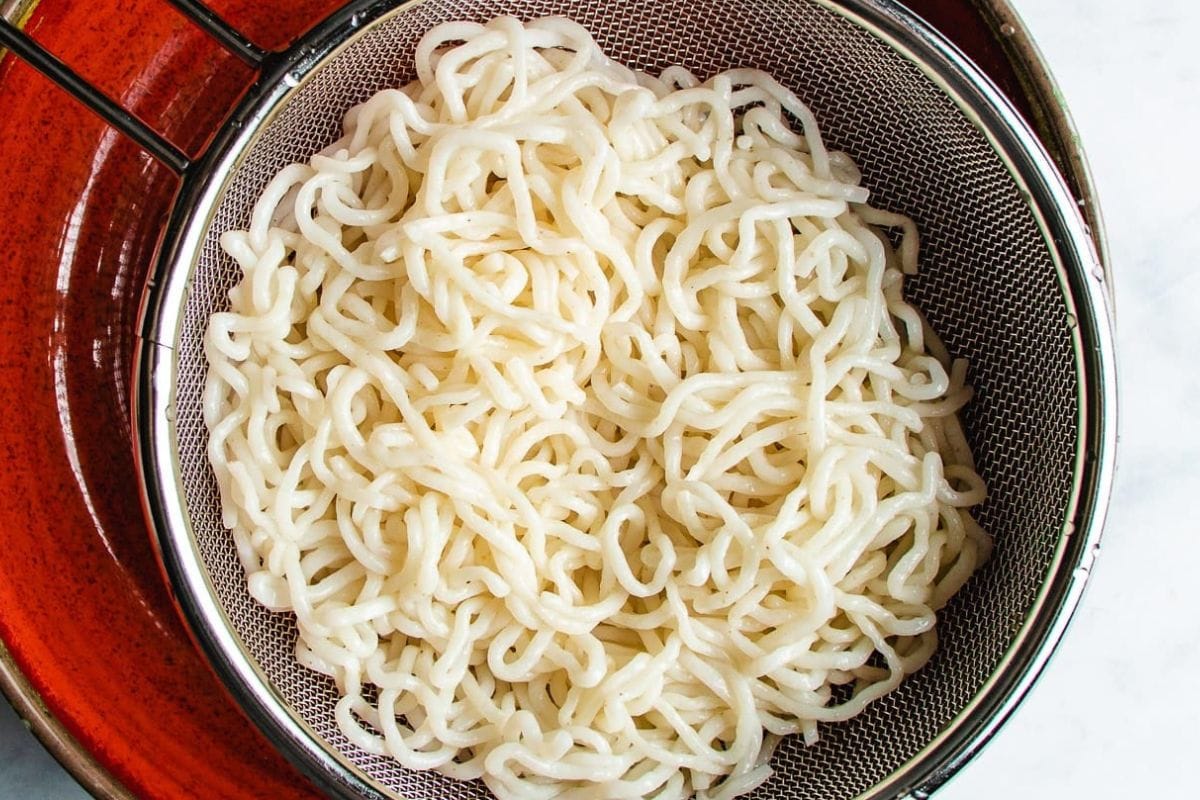
Shirataki noodles are low-calorie Japanese noodles made from konjac yam. They have a gelatinous, rubbery texture and are over 90% water. Shirataki noodles are clear when cooked and have little flavor. They are typically used in Asian soups, stir-fries, and noodle dishes like Shirataki lo mein with chicken as a gluten free and low carb option.
Kelp noodles
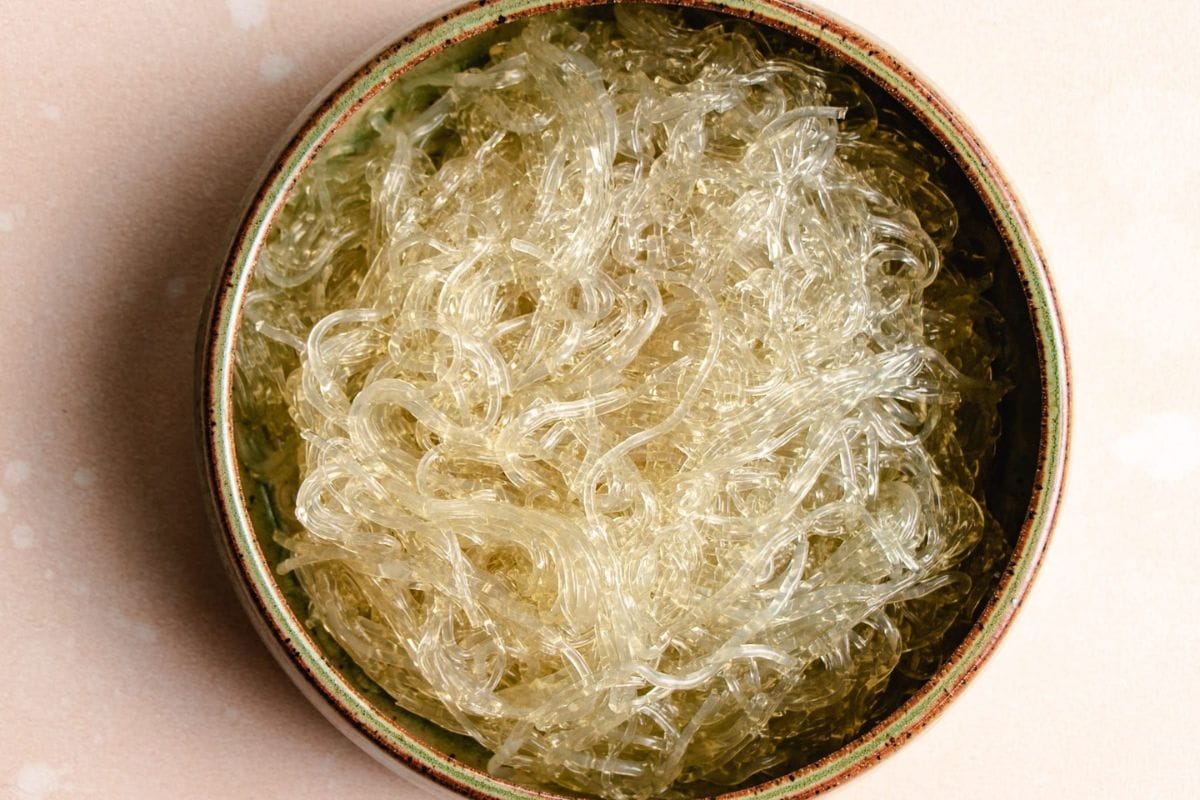
Kelp noodles are a type of seaweed-based noodle made from kelp seaweed, sodium alginate, and water. Kelp noodles have a neutral taste and smooth, silky texture when properly prepared.
To soften the initially rubbery noodles, they are massaged with baking soda and lemon juice or vinegar for 1 minute before rinsing. Kelp noodles contain minerals and antioxidants but are low in calories and carbs.
They can be enjoyed raw in salads or softened then added to soups, stir-fries, and other dishes as a healthy substitute for wheat pasta or glass noodles. Popular brands like Sea Tangle sell original and flavored kelp noodle varieties. Kelp noodles should be stored refrigerated and used within 3 days of opening.
Learn more from our guides on What are kelp noodles and How to cook kelp noodles and recipes such as Pad woon sen (Thai stir-fried glass noodles) and Wintermelon soup with meatballs.
Rice paper wrappers (or sheets)

Rice paper is a flexible, translucent paper made from rice flour and water. It is not technically a noodle but is used to wrap ingredients in many Vietnamese and Thai dishes before steaming, frying, or eating fresh. Some common foods featuring rice paper wrappers are spring rolls, summer rolls, Vietnamese pizza, and crispy fried spring rolls.
Recipes made with rice paper sheets have become very popular in the U.S. You can wrap dumplings with rice wrapper, roll and fry them up to make rice paper egg rolls, stack a few rice sheets and slice them into rice paper noodles, or make rice paper wontons.
To prepare rice paper for use, it is briefly soaked or dipped in room temperature water to soften. Oversoaking the rice sheets is the most common beginner issue.
Only briefly soak the rice sheets for 5 seconds. The rice wrapper should still feel firm when you wrap it. It’ll continue to soften further.
Fresh herbs, cooked noodles and proteins, and vegetables are then wrapped in the softened rice paper before further cooking or serving. The thin wrapper absorbs flavors from the filling ingredients without overpowering them. Its neutral taste also balances stronger tastes.
Wonton wrappers
Wonton wrappers are thin sheets of dough made from flour, water, and salt. Cantonese wonton wrappers (yellow in color) use eggs while Shanghainese wonton wraps (white in color) have no eggs.
These versatile wrappers are essential for creating traditional Chinese dumplings, offering a tender yet slightly chewy texture. Ideal for various fillings, they can be boiled (shrimp wontons), steamed (beef wonton), fried (air fryer wonton chips), or added to soups (wonton egg drop soup).
Selection and Use: Found in most grocery stores and Asian markets, wonton wrappers are available in square or round shapes. Select based on your recipe’s needs.
To prevent drying, keep them covered with a damp cloth when assembling. They can be filled and folded into numerous shapes, and then cooked as desired.
Gluten-free wonton wrappers
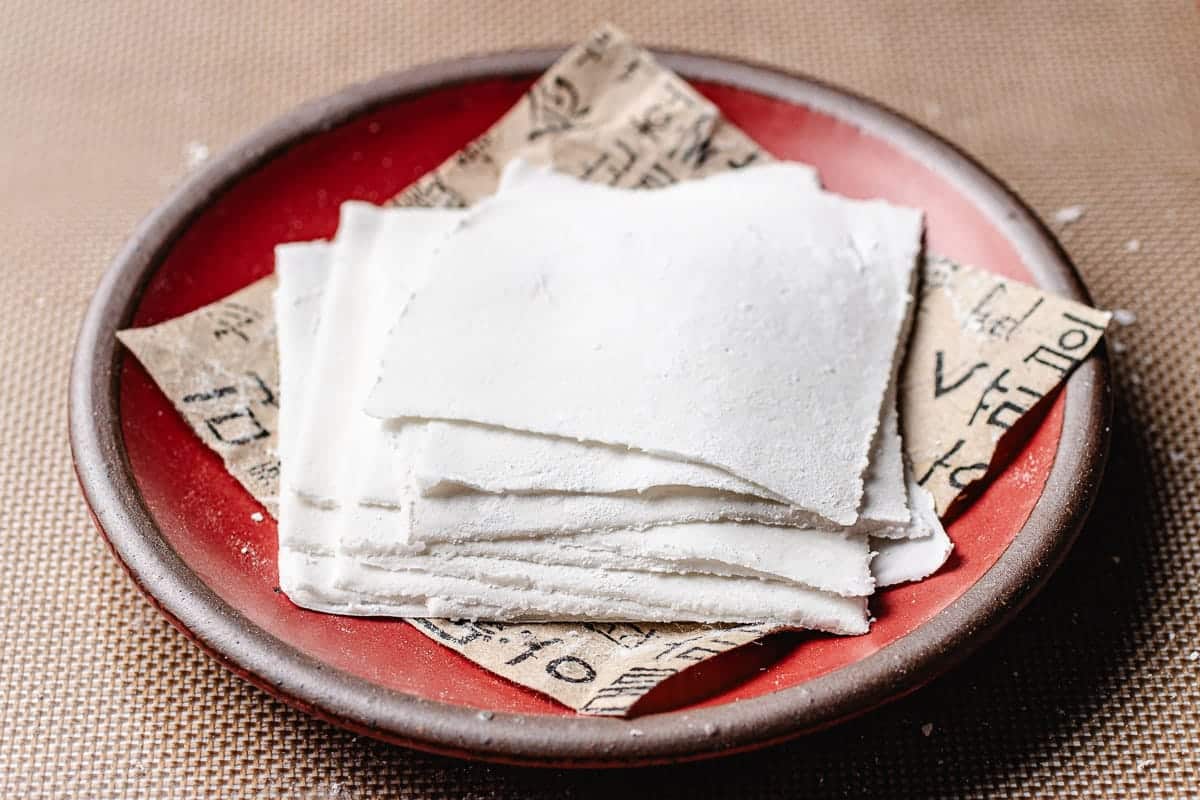
For those avoiding gluten, gluten-free wonton wrappers are a fantastic substitute, made with white rice flour, starch, water, salt, and oil. Since store-bought gluten-free versions are not available, these need to be prepared at home. Check out our guide on making gluten-free wonton wrappers for detailed instructions.
Cooking Tip: Ensure the edges of the wrappers are sealed tightly to keep the filling secure during cooking. Explore various folding methods to enhance the visual appeal of your dishes. See our how to fold wontons for more inspiration and serve the wontons with our wonton sauce!
Dumpling wrappers
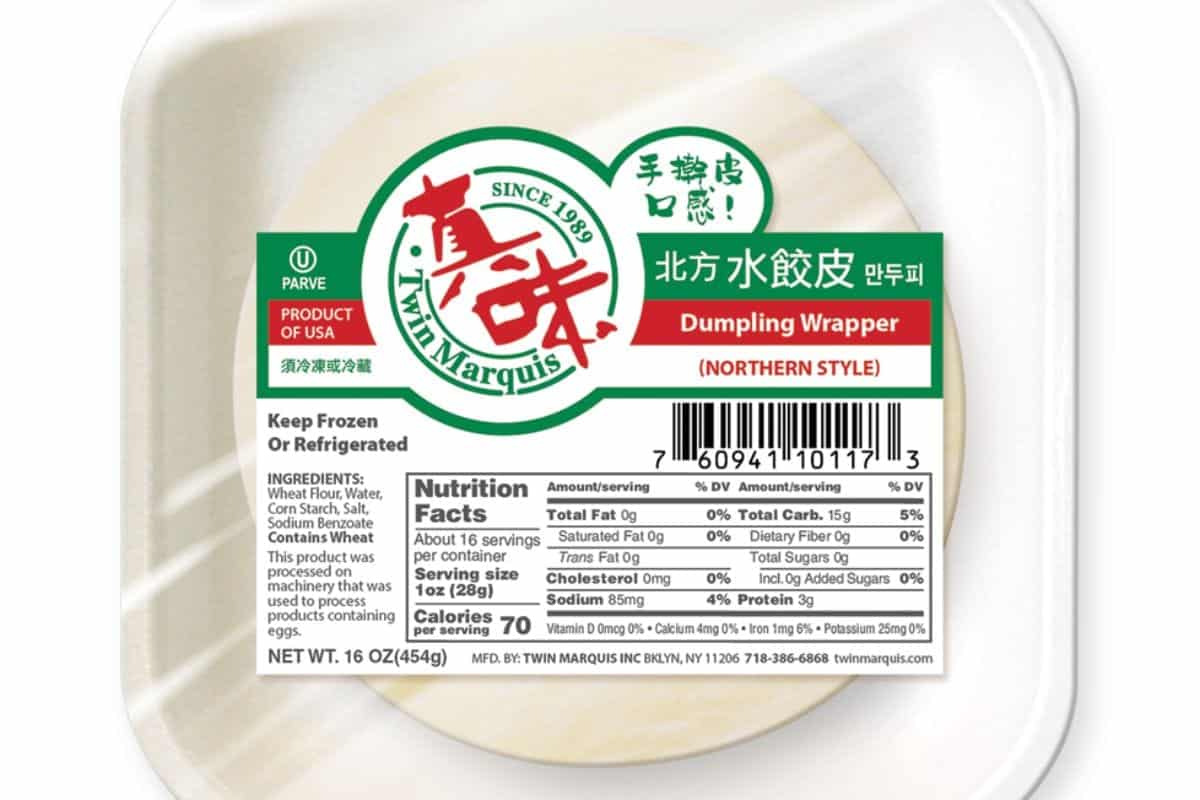
Dumpling wrappers are round or square thin sheets of dough made from flour and water, essential for crafting various Asian dumplings. They are usually a little thicker than wonton wrappers. They encapsulate fillings to create tender delights when cooked, suitable for steaming, boiling, pan-frying, or deep-frying.
Selection and Use: These wrappers are found in different thicknesses and sizes at grocery and specialty Asian markets. Thinner wrappers work well for boiled or steamed dumplings, while thicker ones are best for pan-frying. To prevent drying, keep the wrappers moist by covering them with a damp cloth as you work.
Low-Carb Alternative: A popular option in Japan for those on a low-carb diet involves using thin slices of daikon or jicama as wrappers. This innovative approach doesn’t allow for traditional sealing of the dumplings. Instead, the filling is sandwiched between the vegetable slices, which is best suited for pan-frying and requires delicate handling. Our Daikon dumplings recipe showcases this method beautifully.
Gluten-Free Alternative: For those avoiding gluten, homemade wrappers using gluten-free flour like white rice flour or tapioca starch, mixed with water and salt, offer a safe option. See our Gluten free har gow dumpling wrappers and Gluten free har gow for recipes.
Cooking Tip: Ensure a tight seal on traditional dumplings to prevent the filling from leaking during cooking. For vegetable slice wrappers (low carb), gentle handling is key to maintaining structure. Explore various folding methods to bring creativity to your dishes.


